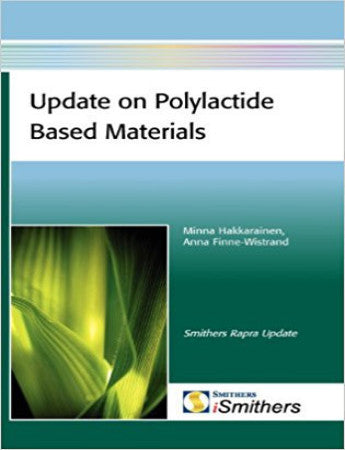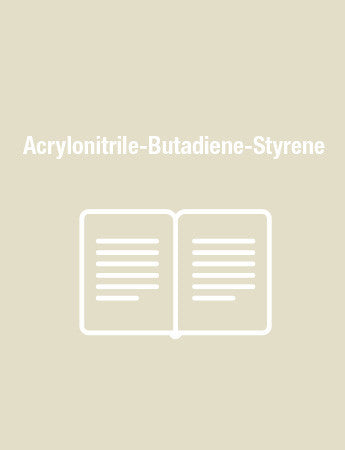Update on Polylactide Based Materials
Polylactides are aliphatic polyesters derived from lactic acid, and various derivatives thereof, and are one of the most promising of polymers based on starting materials available from renewable resources. Materials based on these polymers are at the cutting edge of progress in sustainable materials science.
This book provides an overview of the latest developments in a number of aspects of polylactide research. Chapters cover synthesis using novel catalysts and modified monomers, new copolymers, blends of polylactides with other polymers, stereocomplexes and nanocomposites. The information contained therein will be of interest to all involved in the development of polylactides and other polymers based on sustainable resources, with discussions on how to modify and improve these materials to expand their capabilities even further.
This book provides an overview of the latest developments in a number of aspects of polylactide research. Chapters cover synthesis using novel catalysts and modified monomers, new copolymers, blends of polylactides with other polymers, stereocomplexes and nanocomposites. The information contained therein will be of interest to all involved in the development of polylactides and other polymers based on sustainable resources, with discussions on how to modify and improve these materials to expand their capabilities even further.
1. Introduction
1.1 Polylactide
1.2 Polymerisation
1.3 Applications
1.4 Polylactide and the Environment
References
2 Developments in the Polymerisation of Polylactide-based Materials
2.1 Introduction
2.1.1 Polycondensation
2.1.2 Ring-opening Polymerisation
2.2 Polymerisation in Supercritical Fluids
2.3 Biosynthesis of Polylactide
2.3.1 Enzymes, Homogeneous Systems
2.3.2 Lactide-polymerising Enzyme
2.3.3 Extrusion
References
3 Polylactide Copolymers
3.1 Introduction
3.2 Macromolecular Design in Lactide Copolymerisation
3.2.1 Lactide Copolymers in Nanoparticles
3.2.2 Electroactive Lactide Copolymers
Update on Polylactide Based Materials
3.3 Combination of Ring-opening Polymerisation of Lactide and Nitroxide-mediated Polymerisation
3.3.1 Linear Block Copolymers
3.3.2 Graft Copolymers
3.4 Combination of Ring-Opening Polymerisation of Lactide and Reversible Addition Fragmentation Chain Transfer
3.4.1 Linear Block Copolymers
3.4.2 Graft Copolymers
3.4.3 Amphiphilic Copolymers
3.4.4 Thermosensitive Copolymers
3.5 Combination of Ring-Opening Polymerisation of Lactide and Atom Transfer Radical Polymerisation
3.5.1 Block Copolymers
3.5.2 Graft Copolymers
3.5.3 Dendrimer-like Copolymers
3.5.4 Amphiphilic Block Copolymers
3.5.5 Carbohydrates as Initiators for the Ring-opening Polymerisation of Lactide
3.6 Combinations
References
4 Polylactide Blends
4.1 Introduction
4.2 Blends with other Polyesters
4.2.1 Polycaprolactone
4.2.2 Poly (hydroxyalkanoates)
4.2.3 Poly (butylene succinate), Poly(butylene adipate) and Related Polymers
4.2.4 Aliphatic-aromatic Polyesters
4.3 Polylactide/Starch Blends
4.3.1 Grafting Approaches for Improving the Compatibility
4.3.2 Ternary Blends and Plasticisation
4.3.3 Biodegradation
4.4 Other Biodegradable Blends
4.4.1 Poly(ethylene glycol) and Poly(propylene glycol)
4.4.2 Poly(vinyl alcohol)
4.4.3 Chitosan Blends
4.4.4 Soy Protein Blends
4.4.5 Soya Bean Oil Blends
4.4.6 Other Polylactide Blends
4.5 Blends of Polylactide with Inert Polymers
4.5.1 Polyethylene and Polypropylene
4.5.2 Polystyrene
4.5.3 Poly(methyl methacrylate)
4.5.4 Elastomers and Rubbers
4.5.5 Poly(vinyl phenol)
References
5 Polylactide Stereocomplexes
5.1 Introduction
5.2 Stereocomplex Formation
5.2.1 Stereocomplexation in Solution
5.2.2 Stereocomplexation from the Melt
5.2.3 Stereocomplexation under other Conditions
5.3 Poly(l-lactide)/Poly(d-lactide) Blends
5.4 Block Copolymers
5.5 Micelles, Hydrogels and Crosslinked Materials
5.6 Characterisation and Properties
5.7 Hydrolytic and Thermal Degradation
5.8 Applications
References
6 Polylactide Nanocomposites
6.1 Introduction
6.2 Nanoclay Composites
6.2.1 Processing and Preparation
6.2.2 Properties and Characteristics
6.2.3 Biotic and Hydrolytic Degradation
6.3 Metal Oxide and Silver Nanocomposites
6.3.1 Titanium Dioxide
6.3.2 Silicon Dioxide
6.3.3 Silver
6.4 Carbon Nanotubes
6.4.1 The Effect of Surface Modification
6.4.2 Degradation
6.5 Other Nanofiller
References
7 Polylactide Biocomposites
7.1 Introduction
7.2 Wood Composites
7.2.1 Physicomechanical and Thermal Properties
7.2.2 Effect of Moisture Uptake and Hygro expansion
7.2.3 Biodegradation
7.3 Composites with Microcrystalline Cellulose
7.4 Flax Fibre Composites
7.5 Jute Fibre Composites
7.6 Kenaf and Hemp Fibre Composites
7.7 Other Green Polylactide Composites
7.8 Recycling
7.9 Comparison of Mechanical Properties for Different Polylactide Biocomposites
References
8 Future Perspectives
Abbreviations
Index
1.1 Polylactide
1.2 Polymerisation
1.3 Applications
1.4 Polylactide and the Environment
References
2 Developments in the Polymerisation of Polylactide-based Materials
2.1 Introduction
2.1.1 Polycondensation
2.1.2 Ring-opening Polymerisation
2.2 Polymerisation in Supercritical Fluids
2.3 Biosynthesis of Polylactide
2.3.1 Enzymes, Homogeneous Systems
2.3.2 Lactide-polymerising Enzyme
2.3.3 Extrusion
References
3 Polylactide Copolymers
3.1 Introduction
3.2 Macromolecular Design in Lactide Copolymerisation
3.2.1 Lactide Copolymers in Nanoparticles
3.2.2 Electroactive Lactide Copolymers
Update on Polylactide Based Materials
3.3 Combination of Ring-opening Polymerisation of Lactide and Nitroxide-mediated Polymerisation
3.3.1 Linear Block Copolymers
3.3.2 Graft Copolymers
3.4 Combination of Ring-Opening Polymerisation of Lactide and Reversible Addition Fragmentation Chain Transfer
3.4.1 Linear Block Copolymers
3.4.2 Graft Copolymers
3.4.3 Amphiphilic Copolymers
3.4.4 Thermosensitive Copolymers
3.5 Combination of Ring-Opening Polymerisation of Lactide and Atom Transfer Radical Polymerisation
3.5.1 Block Copolymers
3.5.2 Graft Copolymers
3.5.3 Dendrimer-like Copolymers
3.5.4 Amphiphilic Block Copolymers
3.5.5 Carbohydrates as Initiators for the Ring-opening Polymerisation of Lactide
3.6 Combinations
References
4 Polylactide Blends
4.1 Introduction
4.2 Blends with other Polyesters
4.2.1 Polycaprolactone
4.2.2 Poly (hydroxyalkanoates)
4.2.3 Poly (butylene succinate), Poly(butylene adipate) and Related Polymers
4.2.4 Aliphatic-aromatic Polyesters
4.3 Polylactide/Starch Blends
4.3.1 Grafting Approaches for Improving the Compatibility
4.3.2 Ternary Blends and Plasticisation
4.3.3 Biodegradation
4.4 Other Biodegradable Blends
4.4.1 Poly(ethylene glycol) and Poly(propylene glycol)
4.4.2 Poly(vinyl alcohol)
4.4.3 Chitosan Blends
4.4.4 Soy Protein Blends
4.4.5 Soya Bean Oil Blends
4.4.6 Other Polylactide Blends
4.5 Blends of Polylactide with Inert Polymers
4.5.1 Polyethylene and Polypropylene
4.5.2 Polystyrene
4.5.3 Poly(methyl methacrylate)
4.5.4 Elastomers and Rubbers
4.5.5 Poly(vinyl phenol)
References
5 Polylactide Stereocomplexes
5.1 Introduction
5.2 Stereocomplex Formation
5.2.1 Stereocomplexation in Solution
5.2.2 Stereocomplexation from the Melt
5.2.3 Stereocomplexation under other Conditions
5.3 Poly(l-lactide)/Poly(d-lactide) Blends
5.4 Block Copolymers
5.5 Micelles, Hydrogels and Crosslinked Materials
5.6 Characterisation and Properties
5.7 Hydrolytic and Thermal Degradation
5.8 Applications
References
6 Polylactide Nanocomposites
6.1 Introduction
6.2 Nanoclay Composites
6.2.1 Processing and Preparation
6.2.2 Properties and Characteristics
6.2.3 Biotic and Hydrolytic Degradation
6.3 Metal Oxide and Silver Nanocomposites
6.3.1 Titanium Dioxide
6.3.2 Silicon Dioxide
6.3.3 Silver
6.4 Carbon Nanotubes
6.4.1 The Effect of Surface Modification
6.4.2 Degradation
6.5 Other Nanofiller
References
7 Polylactide Biocomposites
7.1 Introduction
7.2 Wood Composites
7.2.1 Physicomechanical and Thermal Properties
7.2.2 Effect of Moisture Uptake and Hygro expansion
7.2.3 Biodegradation
7.3 Composites with Microcrystalline Cellulose
7.4 Flax Fibre Composites
7.5 Jute Fibre Composites
7.6 Kenaf and Hemp Fibre Composites
7.7 Other Green Polylactide Composites
7.8 Recycling
7.9 Comparison of Mechanical Properties for Different Polylactide Biocomposites
References
8 Future Perspectives
Abbreviations
Index




